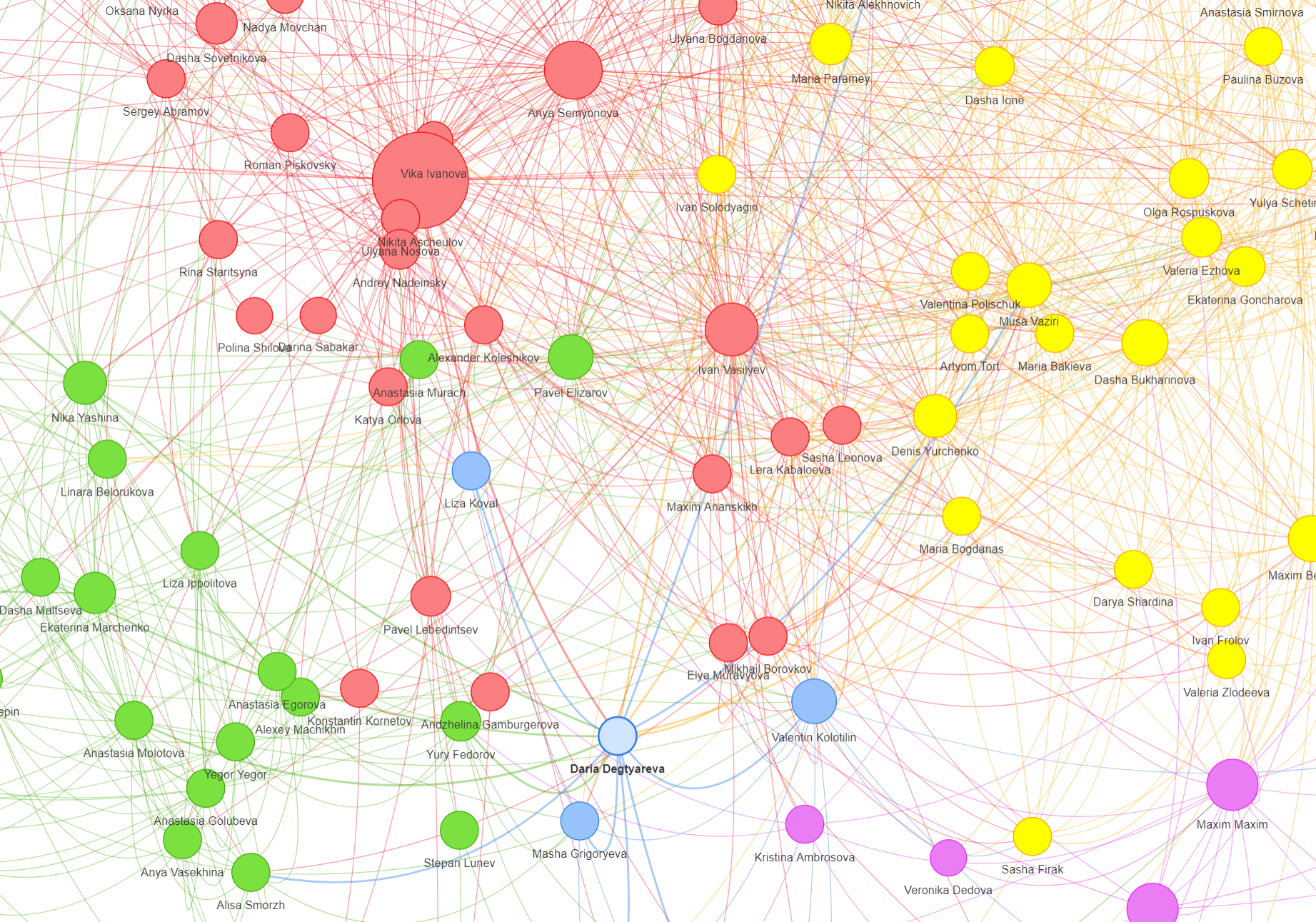Basics of Programming in Python
Introduction
16.09.2022
Course Overview
Basics of Programming in Python is an 8-week compulsory course aimed at social science students to learn programming skills for their research.
- on class: 7 doubled workshops + intro lecture
- on-line: course on Stepik
Schedule
- 1st module: doubled classes on Friday and Saturday until 08.10
- 2nd module: ¯\_(ツ)_/¯
- there will be a big Homework Assignment between modules
Assessment
0.25 * Weekly Quizes
0.25 * Homework Assigment
0.5 * Final Exam
The exam is very much tied to the course material,
so it is recommended to attend classes 🙃
Communication

Communication
Telegram channel with chat -> to discuss and be informed
My email: alexpoov99@gmail.com
- doublecheck whether your question was already asked
- please be ethical: do not text me late at night
- sign your letters and determine their subject, otherwise I may not answer

Let's talk about Python, baby.
Python in the wider context
- Python is very popular.
- Python is versatile.
- Python is very concise.


Python is free and open-source language
- You can take a look at source code of Python (Python and C) here.
- And even contribute!

Python is a high-level language
Every computer program interacts with very low-level components of computer - memory in bytes (0,1).
However, for the sake of convenience, time-saving and ease, this interaction has been abstracted away by multiple layers
The beauty of it is that you do not have to know much about this interaction to become a good python programmer.
This is because logical units of python are mere abstractions: objects instead of computer processor transistors and memory.

Python is an interpreted language
- It doesn't need to be compiled and can be distributed as plain text files with
.pyfile extension - Source code (plaintext
.pyfile) is compiled into bytecode, which is later executed by Python Virtual Machine, but this process is abstracted from the developer. - Therefore, python can be run in two ways:
- interactively (line-by-line)
- as a complete script

Python is an object-oriented language
This means that logical units of Python programs are objects.
Objects store together the data and means to process it
- a practical example: a string objects stores its value as way as methods to manipulate it (example below)
Please do not antagonize functional vs. object-oriented programs, because one could be both and paradigms are not exclusive.
Python is an object-oriented language
Because Python is very flexible, so you can make your code be both:
- imperative and object-oriented (e.g. have a set of consecutive instructions but use objects)
- functional and object-oriented (e.g. have objects with pure functions)
Python is a language with dynamic semantics
Python objects are dynamic because they are not strictly typed.
In languages such as Java, C, or C++, you initialize a variable with a pre-defined type.
But in Python, the type of object is determined in runtime.
Python is a very versatile language and can do:
- systems programming (built-in libraries allow access to the operating system)
- APIs (application programming interfaces), e.g. means of communication between programs
- internet scripting: parsing websites, back-end and front-end web-development
- scientific programming: data analysis, data visualisation, machine learning...
- working with databases and data engineering
- game projects, mobile apps, networks, etc.



Python is a language with great and extensive documentation
In case you have any question, please, consult with it first, and only afterwards go to Google and forums like StackOverflow.
What to Read?
- I recommend cool open-source book 'A Bite of Python' (also in rus) for those who identify themselves as book worms.
- RealPython and W3School are cool sites with loads of useful info.
- DataCamp is my fav. online-courses, but there are difficulties with payment nowadays. You can try stepik, coursera, udemy and teach-in.
- Test your skills with HackerRank. Advanced practice: Advent of Code.
Where to Code?
There is two extensions you need to know:
.pyis a regular Python file with your code only..ipynbis a Python notebook, which output shows in readable format.- There is code blocks (or chunks).
- There is also Markdown (lightweight markup language for creating formatted text) chunks.
Where to Code?
Some places where you can edit Python files:
- Terminal (?)
- Jupyter Notebook (an open-source application to edit
.ipynbfiles, imo it's great for beginners) - Specific platforms like Colab, Deepnote, Gradient, etc.
- Installed Integrated development environment (IDE): Visual Studio Code, PyCharm, Atom...


